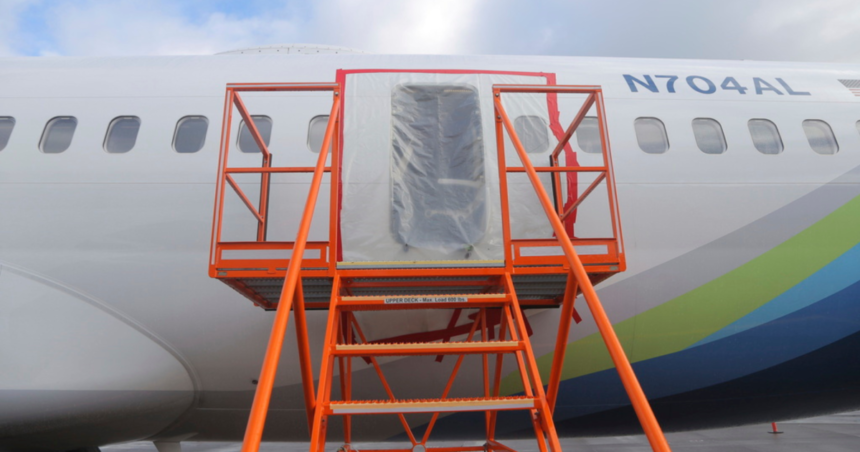“Chaos” and “an explosive experience” — is how the co-pilot and captain described being on board a Boeing 737 that suffered a midflight blowout in January.
“This was quite traumatic for the crew and the passengers and injuries we can’t see, which we often don’t talk about, can have profound, lasting impacts on lives and livelihoods,” said Jennifer Homendy, chair of the National Transportation Safety Board
Federal investigators with the NTSB began its two-day hearing Tuesday with Boeing and the company’s manufacturers to better understand what led up to midflight blowout.
The fuselage of the plane and the door plug was made in Wichita, Kansas, by Spirit Aerosysyems. Spirit then shipped the fuselage last summer to Boeing’s Renton, Washington, facility.
RELATED STORY | Boeing names new president and CEO following big second quarter loss
The plug was taken off to fix some damaged rivets, but the bolts of the plug were never reinstalled when the plug was put back into place. It’s still not clear who took the door plug off at the Renton facility.
The NTSB also released more than 3,000 pages of documents with details and transcripts of interviews with workers, including contractors who said they felt like the “cockroaches of the factory,” working six to seven days a week, with major pressure from Boeing.
Other workers interviewed by the NTSB said that the company’s safety culture was “garbage.”
In an interview during a lunch break, Homendy told reporters: “These are known issues. Again, why does it take a serious tragedy which could have been so much more serious for change to occur?”
“Going into all of this with the 737 Max, and it would really apply to all businesses, frankly, not just airline manufacturers, is that clearly they took their eye off the ball and and they’re paying a huge price,” said Chris Dane, the president of Hickory Global Partners who has five decades of experience in the aerospace industry.
Despite the high price Boeing is paying, he believes the company is on the right path to fix its quality and culture issues. However, it may take time for the public to believe that.
“They need to fix it and they need to fix it quickly,” Dane added. “And it looks like, like they are, they’re on that road, but it’s going to take some time for that for the perception to catch up to the reality.”
RELATED STORY | FAA orders inspections on 2,600 Boeing planes over oxygen mask issue
“Since the accident, as a part of our ongoing dialog with the FAA and our comprehensive quality and safety plan, we have established a set of six key performance indicators — or KPIs — that we are using to roll up and indicate a healthy factory,” said Elizabeth Lund, senior VP of quality at Boeing Commercial Airplanes.
Lund was hired in her role in February, and noted during the hearing the company’s plans to improve factory safety plans and inspection processes.
Since the Alaska Airlines blowout, production of 737 Max jets dropped below ten per month. It has been steadily increasing to more than 20 planes per month.
The hearing will continue Wednesday.





